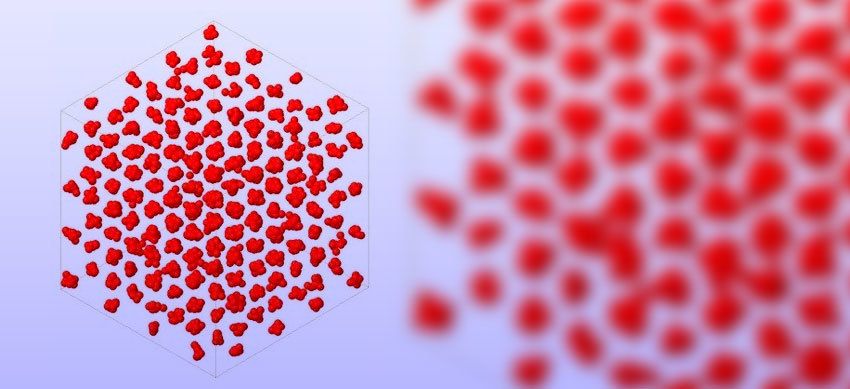Polymers, Soft Matter & Sustainable Materials

The research line “Polymers, Soft Matter & Sustainable Materials” focuses on the experimental and theoretical study of the structure and dynamics of complex molecular systems with an emphasis on polymers, soft matter and functional materials.
THE RESEARCH GROUPS
POLYMERS AND SOFT MATTER
The general scientific objective of the activity program of this group is to achieve a fundamental understanding of the interplay between structure and dynamics at different length and time scales (micro, nano, meso, macro) in materials of increasing complexity based on polymers, glass-forming liquids and soft matter, in particular: polymers with different architectures, single-chain polymer nano-particles, multi-component, nano-structured and biopolymer systems. These materials exhibit complex dynamics and rheology and, in many cases, show hierarchical relaxations over many different length- and time-scales, which need to be unravelled. This in turn affects the processing and properties of the final materials. In order to rationally design appropriate materials and processes for various technological applications, a rigorous knowledge of the interplay between structure and dynamics at different length and time scales is demanded.
Taking inspirations from classical polymer physics, soft matter physics and the physics of condensed matter, the Polymers and Soft Matter group has developed over last years a robust and pioneering methodology to carry on this program. This methodology is based on the combination of different experimental relaxation techniques with neutron, XR and light scattering methods, molecular dynamics simulations and chemical synthesis oriented to polymers. The organization of the group is in fact driven by this methodology and the staff of the group (scientists belonging to the CSIC, the UPV/EHU and Ikerbasque) is composed by experts in different techniques/methods, all of them being involved in the scientific objectives defined at any time.
QUANTUM BEAMS AND COMPUTATION FOR SUSTAINABLE MATERIALS
The “Quantum Beams and Computation for Sustainable Materials” group uses an multi-pronged approach involving quantum beams, theory and simulation to interrogate and understand the structure and properties of sustainable novel functional materials for energy applications, nanoelectronics and lighting.
RESEARCH FACILITIES
Different frequency and time-domain spectrometers covering more than 16th orders of magnitude in frequency/time.
Infrared Spectrometer FT-IR, Terahertz Spectrometer.
Atomic Force Microscope (AFM), Optical/Confocal Microscope, Desktop Scanning Electron Microscope.
Small Angle X-Ray Scattering (SAXS) technique: Rigaku PSAXS-L with simultaneous Wide Angle X-Ray Scattering (WAXS) option, Wide Angle X-Ray Scattering (WAXS) technique: Bruker AXS D8 ADVANCE.
Differential Scanning Calorimetry (DSC), Pressure-Volume-Temperature (PVT), Thermogravimetric Analysis (TGA), Dilatometry (DIL).
Rheometry with simultaneous electric impedance analysis Miniature Material Tester.
Different techniques oriented to Polymer Synthesis and Click-Chemistry.
Inelastic and Quasielastic Neutron Scattering, X-ray Scattering by Synchrotron Radiation.
Several computing clusters at CFM and other institutions (like DIPC) under collaborative research, Software for atomistic and coarse-grained MD-simulations.



